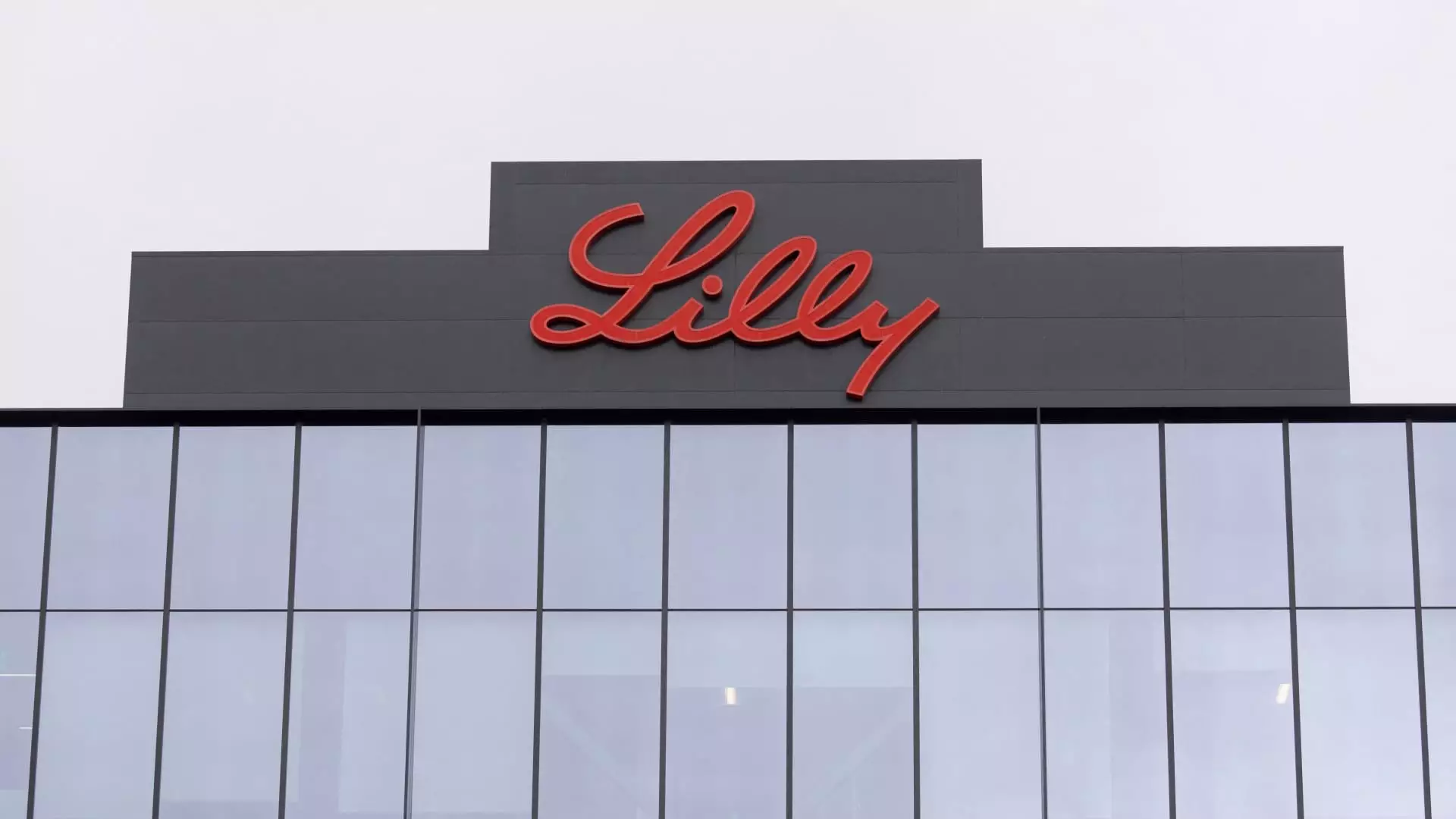As the stock market continues to fluctuate, certain companies have made headlines during midday trading, revealing shifting dynamics influenced by varying market conditions. From pharmaceutical giants to technology infrastructures, the activities of these companies underscore broader trends affecting investors and consumers alike. This article explores recent stock movements, delving into the implications of their performance in light of fiscal expectations and market realities.
Pharmaceutical titan Eli Lilly recently faced a major setback, with shares plummeting over 7%. This decline came in response to the company’s admission that demand for its weight loss and diabetes treatments would fall short of previously set expectations. Eli Lilly now anticipates a full-year revenue of around $45 billion for 2024, which is a downward revision from the earlier forecast of $45.4 to $46 billion issued in October. This pivot highlights the volatility prevalent within the pharmaceutical sector, where shifts in consumer behavior and regulatory landscapes can significantly impact business projections.
Boeing’s shares also witnessed a decline, dropping more than 2%. The aerospace manufacturer’s delivery figures for 2024 revealed a disturbing trend—planes delivered were about a third less than the previous year, totaling just over 348 units. Comparatively, rival Airbus reported an impressive 766 deliveries in the same span. This disparity not only underscores the challenges Boeing faces in maintaining market competitiveness but also raises concerns regarding the company’s operational efficiency and management strategies.
On a more optimistic note, Applied Digital saw its stock climb more than 6% following a significant investment announcement from Macquarie. The investment firm has pledged to infuse up to $5 billion into Applied Digital’s artificial intelligence data centers, acquiring a 15% stake in the high-performance computing (HPC) segment. This influx of capital highlights investor confidence in the burgeoning AI sector, as digital infrastructure becomes increasingly crucial in supporting innovative technologies.
Meanwhile, Hesai, a Chinese auto supplier, enjoyed an 8% rise in stock value after receiving an upgrade from Goldman Sachs, which shifted its rating from neutral to buy. Analyst Tina Hou noted that the market has potentially undervalued Hesai, particularly concerning its new product cycle, which may provide significant operational leverage. This underlines the importance of analyst sentiment in shaping market perceptions and investor confidence.
In stark contrast, Signet Jewelers experienced a troubling 26% drop in share value after the company announced a revision of its fourth-quarter guidance. The jewelry retailer attributed this poor performance to lackluster holiday sales, as consumers opted for lower-priced items. This situation speaks to the broader consumer trend towards value-driven purchasing, particularly in a time of economic uncertainty.
KB Home, however, reported a positive earnings surprise, with shares increasing by 3%. The homebuilder’s reported earnings per share of $2.52 exceeded the anticipated $2.45, with overall revenue of $2 billion also beating forecasts. This performance in the housing sector can be viewed as a potential indicator of resilience, suggesting a continued demand for housing despite the variable economic climate.
In a noteworthy development, H & E Equipment Services saw its stock skyrocket by over 105% after United Rentals announced a definitive acquisition plan. The offer of $92 per share values H & E at approximately $4.8 billion, simultaneously boosting United Rentals’ stock by 3%. This merger showcases the strategic maneuvers companies undertake to consolidate market power and enhance operational capabilities.
Instacart and Celanese further contributed to the mixed market sentiment, with Instacart’s modest rise of over 1% following an upgrade by BTIG, while Celanese’s shares jumped 5% owing to a double upgrade from Bank of America. Both companies highlight an aspect of the market where company fundamentals and external evaluations can lead to positive adjustments, even amid a backdrop of overall market uncertainty.
Today’s stock movements reveal a tapestry of performance ranging from steep declines to significant gains. While some companies confront challenges that reflect broader economic trends, others are positioning themselves for growth through strategic investments and operational improvements. This dynamic stock market landscape necessitates that investors remain vigilant, adapting to the shifts that shape the future of our economy.

